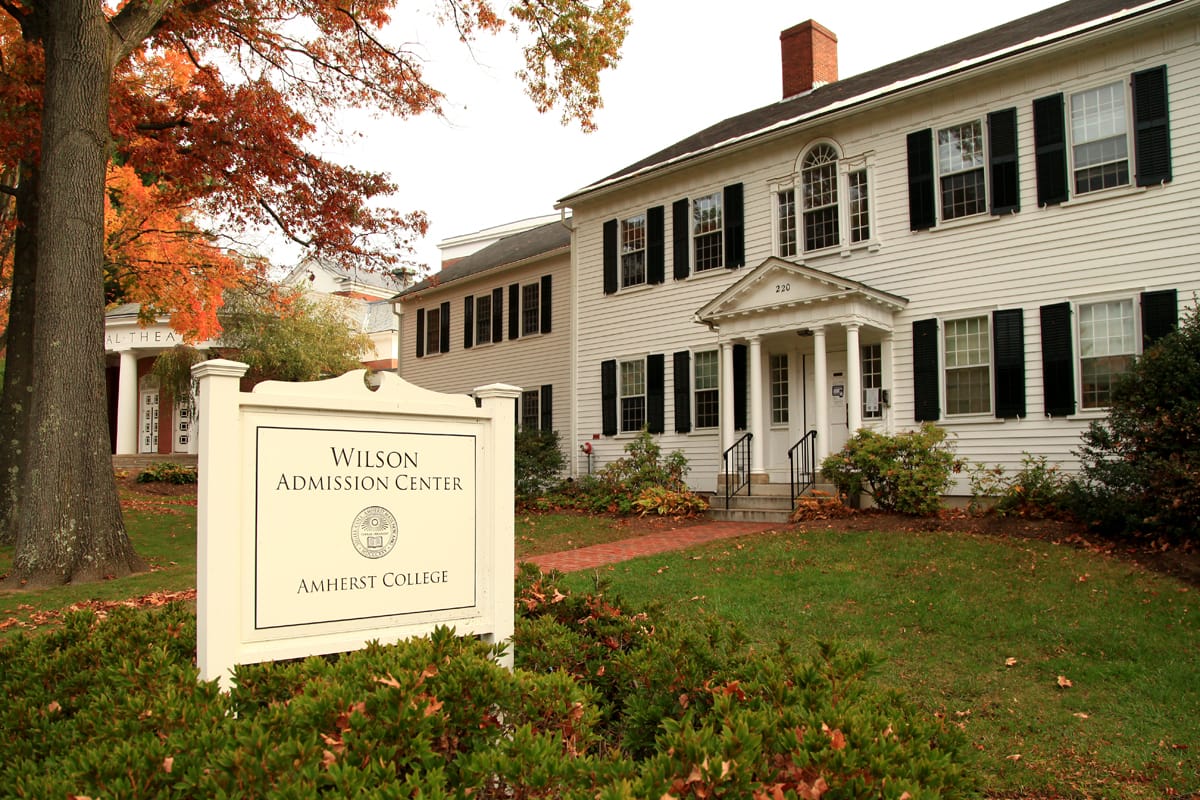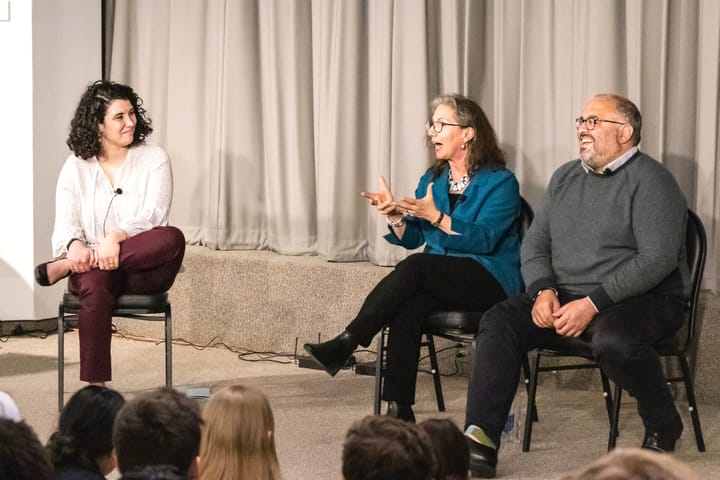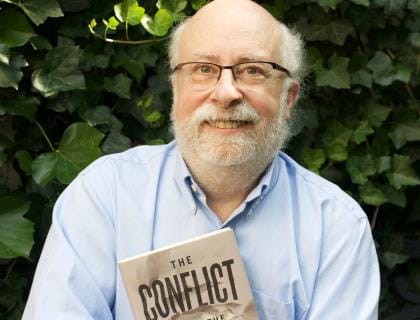College Ends Legacy Admissions, Expands Financial Aid; Community Reacts
In an email sent to the college community on Oct. 20, President Biddy Martin announced that the college will end its legacy admission preference starting in the 2022-2023 academic year. The college will also implement an expanded and simplified financial aid program.


In an email sent to the college community on Oct. 20, President Biddy Martin announced that starting in the 2022-2023 academic year, the college will end its legacy admission preference — which confers an admissions advantage to children of alumni — as well as implement an expanded and simplified financial aid program.
Legacy preferences have long been a controversial aspect of the college’s admissions policy, with critics arguing that they exacerbate socioeconomic and racial inequities on campus. Nationally, the majority of selective private universities and most liberal arts colleges still practice legacy admissions, making Amherst one of the only institutions of its kind to abandon the practice. It joins Pomona College, John Hopkins University, Massachusetts Institute of Technology, and California Institute of Technology in its decision.
As it stands, around 11 percent of each class year consists of legacy students. For the class of 2025, around 18 percent of first-year students were first-generation college students.
The new changes are part of continual efforts to make Amherst “the college we want to be — the created community that stands for opportunity and academic excellence,” wrote Martin. She outlined several components of the enhanced financial aid program, including greater transparency in the awarding of aid, more generous grants and scholarships, an increased amount of direct funding to cover student expenses, and a work-study expectation reduced to four hours per week from six hours.
According to a press release, the college will “increas[e] its commitment to student financial aid to $71 million per year” and, in so doing, “provide support for 60 percent of its students, among the highest proportion of any need-blind liberal arts college.”
“We want students who are considering Amherst to see that: 1) Amherst can be affordable for them; 2) their financial aid will not make loans a part of their aid package, allowing them to graduate without enormous debt; 3) they will have funding to help with necessities after they arrive; and 4) they need not have family connections to get in,” Martin added.
Ending Legacy Admissions
The changes were received positively by large swaths of the Amherst community, including students, alumni and faculty.
“Ending legacy admissions in Amherst is one of the many steps every academic institution needs to make to address educational inequality,” said Ana Abreu ’24E, who transferred to Amherst this semester. “I’m happy to be part of a community that will every year become more diverse and inclusive, giving everyone, without exceptions, the chance to succeed.”
“How did @AmherstCollege celebrate its bicentennial? By ending legacy admission. Oh yeah, and increasing financial aid another $4 million. #ProudAlum #TusksUp,” tweeted Anthony Abraham Jack ’07, a sociologist focused on the relationship between disadvantaged students and elite colleges.
Alumni, students and professors from peer institutions such as Williams, Dartmouth, and Harvard began calling on their administrations to make similar moves over Twitter. “I hope @Harvard follows suit,” Tweeted Brian Na, an alumni of Harvard College. “I remember as an immigrant kid in NYC, I was able to attend the @AmherstCollege Diversity Overnight, which absolutely opened my eyes to what opportunities were out there. Not surprised that they are at the forefront of this!”
Kevin Gutierrez ’24 expressed his support for the decision but acknowledged overarching structures of privilege and said that it would be “naive to believe” that ending legacy admissions will “actually fundamentally change much.” He explained: “People who were legacy in the first place already have more access to resources than the average student because their parents went to a school like Amherst and likely ended up being fairly successful in their careers,” he said. “While you are directly taking out the fact that someone is a legacy and holds that position by virtue of them being born to a certain person, it doesn’t actually fully erase any of the benefits that people have because of the circumstances of their birth.”
Similarly, Taylor added, “We see the rich getting richer and using whatever advantage they can for having money to get their children into college … there is a huge advantage that people who are privileged have, to get their kids trained for the various tests, to get them professional help on writing an essay … that kind of an advantage, to me, is unfair.”
Anna Penner ’24 also expressed her support for the policy change. “I think that this change is really important … to make sure that access isn’t limited,” she said. “I think that the more we can do to cut away at the inherent privilege and discrimination within those communities is only going to make us more cohesive and better able to actually support everybody at the school and make everybody feel included.”
Penner does not believe the policy will stop legacy students from applying to the college, however. As a legacy student herself, she stated that a large part of the reason she applied to Amherst was because she knew “what my mom got out of [attending Amherst] and that she had an amazing experience.”
Other community members had thoughts on how the policy change will affect legacy students themselves. Dean of Students Rick Lopez stated that he “is very enthusiastic about the new policy,” and stated his hope that “it allows legacy students to feel confident in their abilities, without any cloud of doubt hanging over their heads about their talent.”
Following her initial Oct. 20 email, Martin sent a follow up email addressing this question. Martin wrote, “Each Amherst student, whether they have family members who are alums or not, was admitted as part of a very careful selection process and deserves to be here … A change in policy does not change the fact that legacy applicants are often among the most gifted and promising in our applicant pool.”
Gutierrez said he found Martin’s comments about the competency of legacy students frustrating. “I understand, you have to keep the funding that comes from these legacy families … But you do have to understand how that comes across to the rest of the student population. It kind of shows what the school’s priorities are in that moment. They kind of want to have their cake and eat it too,” he said.
Penner added that she found the follow up email “bizarre.” As a legacy student, she said, “I don’t think that I don’t deserve to be here, but I think that there are a whole lot of people who didn’t get in here who also absolutely deserve to be here,” she said. “I hope that [this change] means that people who deserve to be here will be let in regardless of other factors, like having a family member who went here, in order to make it more diverse and not quite as much of a family-tradition based school.”
Increasing Financial Aid
The college’s commitment to increase financial aid expenditures is another result of the growing endowment and its belief that there “should be no doubt that a world-class undergraduate education is within reach for all income groups,” Martin put it. In addition to the $4 million increase in financial aid spending, the college is enhancing the program to make it “transparent, easy to understand and even more comprehensive.”
The college acknowledged that its exceptionally large endowment — now close to 3.8 billion dollars — is part of what makes this decision possible. “We are doing what we’re doing because we can, and because we should,” said Martin in an interview with the New York Times.
The results of these changes mean that students from 80 percent of U.S. households will receive scholarships that cover full tuition at Amherst, and students from families earning less than the median will “typically receive a scholarship that covers not only full tuition, but also housing and meals,” according to Martin’s email.
Many members of the community expressed excitement and pride at the college’s financial aid and admissions decisions, and others looked at the decision as one step in a much longer and more complex process. Carson Taylor ’67 stated that he supports the college’s decision: “Legacy should not be a factor in admissions … I don’t think that’s appropriate. You’re not going to diversify, you’re not going to broaden the student population when you have any kind of advantage for a legacy child.”
While many community members expressed excitement and support for the increases in financial aid, some were left with questions. “I didn’t really see how this increased financial aid would affect my day to day [life],” said Jeanyna Garcia ’23. “FLI students don’t have dental care or eye care, and that’s one of the biggest setbacks that [I] face. I didn’t really see Biddy addressing any of those holes in our financial aid packages, or what it takes to be here.”
While she appreciates the decrease in required work study from 6 hours to 4 hours, she knows that “people are still going to work, regardless of if hours are cut back. Money is money, and we need money,” she said. “I just don’t really see how our day to day life is going to change, from a FLI student perspective.”
Lingering Questions
Some are still left with questions about how the college will implement these changes regarding legacy admissions. For example, the Common Application, which many students use to apply to Amherst, requires students to provide their parents’ names. Some wondered how, or if, the college will effectively ignore this information in the admissions process.
Taylor also brought up that legacy students are granted additional opportunities to communicate with the administration during the application process. Though Admission Dean’s Day, a day where children of college alumni are invited to come learn about the college and speak to college deans, no longer exists formally, legacy students still have more resources than other applicants via alumni-admission contact. Many have been left asking whether the decision to end legacy preference will extend to practices such as this.
“The goal should be a broad, diverse, fairly chosen group of people into every institution, taking into account that some are more disadvantaged than others,” Taylor said.





Comments ()